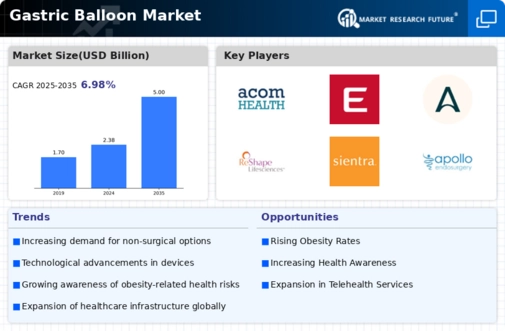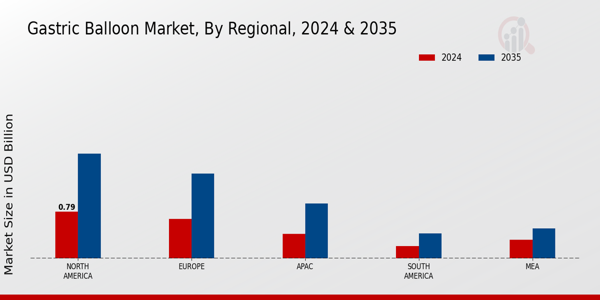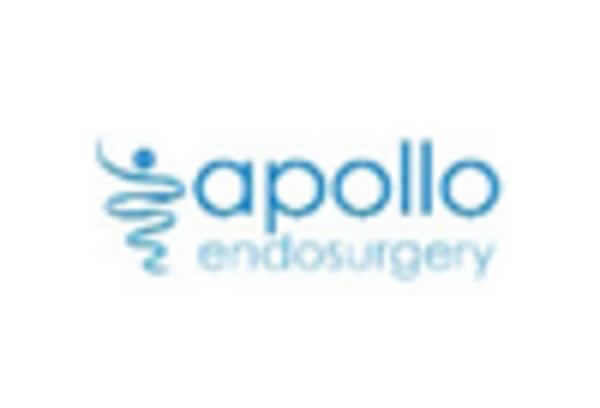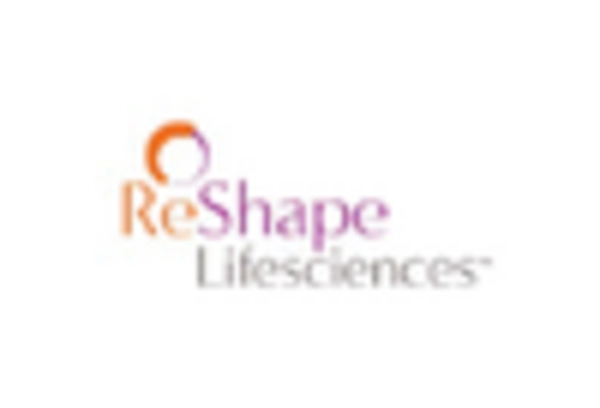Increasing Obesity Rates
The rising prevalence of obesity is a critical driver for the Gastric Balloon Market. According to recent statistics, obesity rates have escalated, with approximately 39% of adults classified as overweight or obese. This alarming trend has prompted a surge in demand for effective weight loss solutions, including gastric balloons. As individuals seek non-surgical options, the Gastric Balloon Market is positioned to benefit significantly. The increasing awareness of obesity-related health risks, such as diabetes and cardiovascular diseases, further fuels the need for innovative weight management solutions. Consequently, healthcare providers are more likely to recommend gastric balloons as a viable alternative, thereby expanding the market's reach and potential.
Evolving Consumer Preferences
Consumer preferences are shifting towards less invasive and more effective weight loss solutions, significantly impacting the Gastric Balloon Market. As individuals become more health-conscious, they are increasingly seeking alternatives to traditional dieting and exercise. Gastric balloons, which provide a non-surgical option for weight management, align with these evolving preferences. Market Research Future indicates that consumers are more inclined to choose solutions that offer convenience and minimal disruption to their daily lives. This trend is further supported by the growing availability of gastric balloon procedures in various healthcare settings, making them more accessible. As consumer preferences continue to evolve, the Gastric Balloon Market is likely to experience sustained growth.
Rising Healthcare Expenditure
The increase in healthcare expenditure is another driving force behind the Gastric Balloon Market. As countries allocate more resources to healthcare, there is a growing emphasis on preventive measures and weight management solutions. This trend is particularly evident in regions where healthcare systems are evolving to address the obesity epidemic. Increased funding for obesity treatment programs and initiatives has led to greater accessibility of gastric balloon procedures. Additionally, insurance coverage for non-surgical weight loss options is expanding, making gastric balloons more affordable for patients. This shift in healthcare expenditure priorities is likely to bolster the Gastric Balloon Market, as more individuals seek these effective weight loss solutions.
Advancements in Medical Technology
Technological innovations play a pivotal role in shaping the Gastric Balloon Market. Recent advancements in balloon design and materials have enhanced the safety and efficacy of these devices. For instance, the introduction of adjustable gastric balloons allows for personalized treatment plans, catering to individual patient needs. Furthermore, minimally invasive procedures have gained traction, reducing recovery times and improving patient satisfaction. The integration of digital health technologies, such as mobile applications for monitoring progress, also contributes to the appeal of gastric balloons. As these advancements continue to evolve, they are likely to attract a broader audience, thereby driving growth within the Gastric Balloon Market.
Growing Awareness of Non-Surgical Options
The increasing awareness of non-surgical weight loss options is a significant driver for the Gastric Balloon Market. Many individuals are hesitant to undergo invasive surgical procedures due to associated risks and recovery times. Gastric balloons offer a less invasive alternative, appealing to those seeking effective weight management solutions without the need for surgery. Educational campaigns and healthcare provider recommendations have contributed to this awareness, leading to a rise in demand. Market data indicates that the non-surgical weight loss segment is expected to grow substantially, with gastric balloons being a prominent choice among patients. This trend suggests a favorable outlook for the Gastric Balloon Market as more individuals opt for non-invasive solutions.


















Leave a Comment